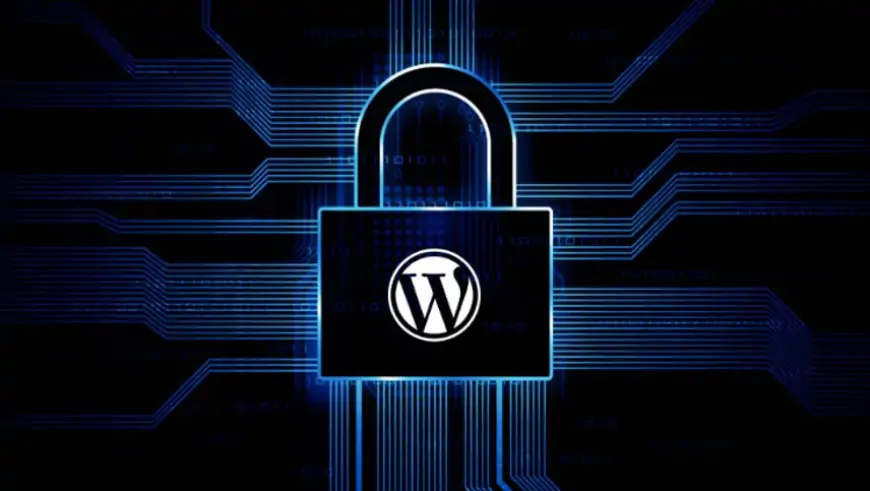5 ways to ensure your WordPress site’s cybersecurity: All you need to know
Discover top strategies to bolster your WordPress site's cybersecurity. Expert-reviewed tips for enhanced protection against online threats.

Did you know that over 455 million websites rely on WordPress? That's about 35% of the global website market share, with around 400 million monthly visitors to WordPress sites. With such widespread usage, it's crucial to prioritize security against cyber threats.
While WordPress may not be among the top 50 SaaS companies, it's one of the most popular content management systems globally. However, having an excellent CMS is pointless if your content is vulnerable to cyber attacks.
In 2018, WordPress accounted for 90% of all hacked CMS websites, but only 2% of data breaches were due to weaknesses in WordPress's core security. Most breaches occurred due to user-related vulnerabilities, often stemming from insecure plugins.
If you run a WordPress site, safeguarding it from cyber threats is paramount. With the growing risks online, prioritizing security is vital for your website's integrity.
To help you protect your WordPress site and data, we've compiled a list of seven effective strategies and best practices. Keep reading to learn how to enhance your site's security.
5 ways to ensure your WordPress site’s cybersecurity
Here are some immediate tricks (pun intended) you can employ to enhance the security of your WordPress site right away.
1. Opt for a secure WordPress hosting provider
Selecting a secure WordPress host is a crucial aspect of managing risks for your project. The hosting service you choose significantly influences your website's security, making it essential to carefully consider your options. Avoid hastily selecting a host and steer clear of suspiciously inexpensive providers, as low prices often signal underlying issues. Hosting your WordPress site on a personal VPS, especially without technical expertise, is not advisable. Instead, prioritize hosts capable of effectively addressing security incidents, ensuring trustworthiness.
Subscribing to services from a reputable hosting company guarantees comprehensive website security, including various levels of periodic remote support. Look for hosts that conduct daily malware scans and offer 24-hour support through mechanisms like automatic call distributors to promptly address client inquiries.
2. Keep your PHP version updated
PHP, an integral component of your WordPress site, requires regular updates to ensure optimal performance and security. Each PHP release typically receives full support for approximately two years before upgrades, along with periodic fixes addressing security vulnerabilities.
Currently, PHP 7.4 is the latest version, with support also available for versions 7.2 and 7.3. Running outdated PHP versions, such as 7.1 or lower, poses a higher risk of cyberattacks, as highlighted by WordPress usage statistics. Despite the time required to test code compatibility with new PHP versions, operating a website without necessary security support is not advisable.
Using the latest PHP version not only enhances security but also improves website performance and efficiency. Leveraging communications platform as a service (CPaaS) solutions can facilitate obtaining assistance from service providers when unsure about updating PHP versions.
3. Prioritize secure passwords
While emphasizing secure passwords may seem repetitive, it's astonishing how often this aspect is overlooked. SplashData's findings for 2018 revealed '123456' as the most popular password, followed by 'password,' underscoring the lax approach many take to online security.
Using easily guessed passwords makes WordPress sites vulnerable to hacking attempts, highlighting the importance of mobile device management (MDM) for most projects. MDM ensures dedicated devices and teams work to enhance security. Seeking assistance from digital customer service for generating secure passwords is advisable. Digital customer service provides solutions via digital platforms like text, chat, and social media, diverging from traditional VoIP systems.
Employing a unique, intricate password is vital for safeguarding digital systems. While concerns about forgetting complex passwords exist, solutions such as encrypted database storage on PCs or online password managers offer secure options, storing passwords in cloud storage.
Regardless of the method chosen, ensuring the WordPress website password is both secure and unique is paramount.
4. Implement two-factor authentication
Two-factor authentication (2FA) adds an additional layer of security, necessitating users to authenticate identity through two distinct means. Typically, this involves a code sent to the user's phone or email, or a personal question.
Integrating 2FA into your WordPress website enhances security significantly and extends to applications like secure file sharing. The flexibility to choose preferred authentication methods is advantageous.
Many opt for Google's Authenticator app, ensuring sole access to unique codes via text messages.
5. Select secure plugins only
The trend of installing plugins to enhance WordPress websites' functionality is prevalent, but it can introduce security risks if not approached cautiously.
Wordfence reported that in 2016, vulnerable plugins were responsible for nearly 60% of WordPress user data breaches, underscoring the importance of choosing verified secure plugins. Opting for trusted plugins available in 'popular' or 'featured' categories on the WordPress platform or downloading directly from developers is prudent. Checking for concrete security policies is crucial.
Some plugins offer additional features like automated database backups, malware scanners, and built-in firewalls, signaling reliability. Regularly updating plugins to access bug fixes, security patches, and version upgrades is essential to mitigate potential vulnerabilities and prevent unauthorized access.
Outsmarting cyberbullying
Certainly, the frequency of cyberattacks targeting WordPress websites is increasing. Nevertheless, by leveraging available technological resources and following the right advice, you can shield your website from potential breaches. We've already provided valuable insights into fortifying your WordPress site's cybersecurity; now, it's time to put them into action.
For further details on various security incidents you might encounter, you can refer to Auditboard's post.
However, it's essential to remain vigilant even with security measures in place. Regular monitoring coupled with effective security maintenance is crucial for ensuring the ongoing security of your site.












































